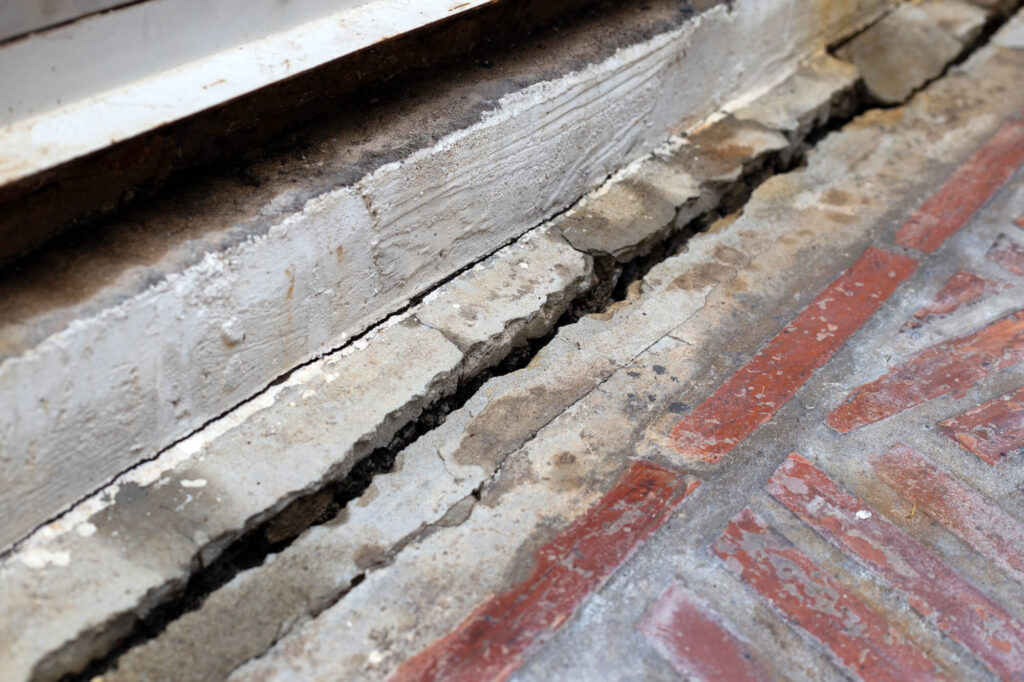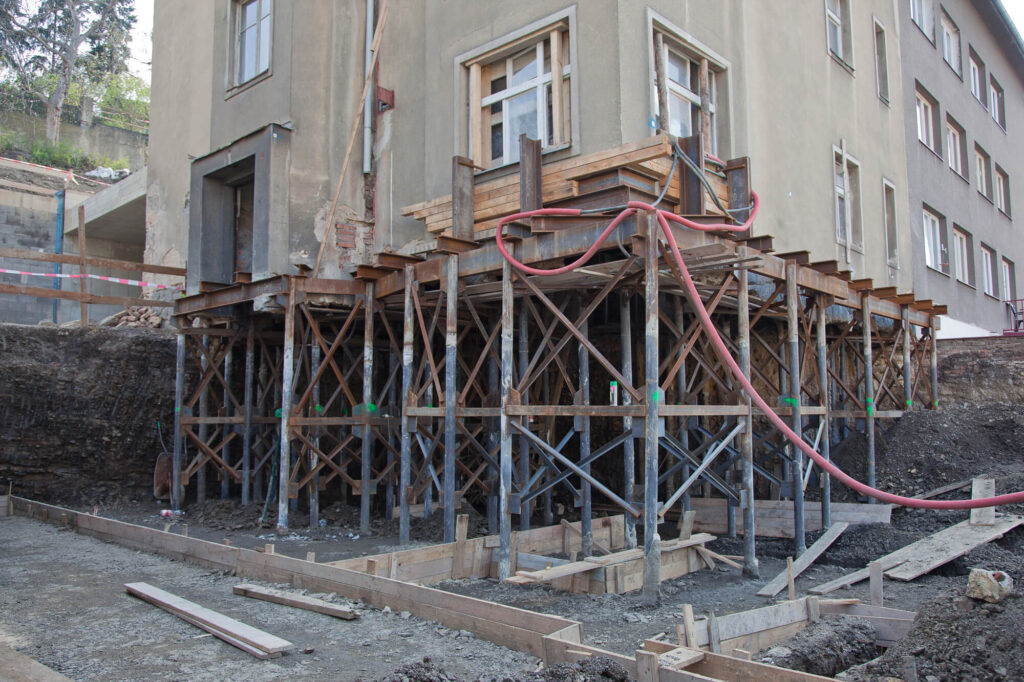When was the last time you checked your home’s foundation? In San Antonio, the unique soil composition and unpredictable weather conditions make regular foundation inspections essential to prevent costly repairs and structural damage. The expansive clay soil in the region expands when wet and contracts during dry periods, leading to foundation movement and differential foundation settlement.
Ignoring visible signs of foundation issues can result in severe damage, requiring expensive foundation repair services.
With our guide here, you’ll learn about the essential steps of a professional foundation inspection, when to seek help from a foundation repair expert, and what to expect from the inspection process in San Antonio.
Why Professional Foundation Inspections Are Essential in San Antonio
San Antonio’s climate, with its mix of droughts and heavy rains, combined with expansive soils, puts added pressure on home foundations. A professional foundation inspection can help detect underlying issues early and prevent expensive repairs. Here’s why scheduling an accurate foundation inspection is crucial:
- Early Detection of Issues: Identifies cracks in walls, foundation settlement, and moisture issues before they escalate.
- Prevents Costly Repairs: Small signs of damage can quickly become major repairs if left untreated.
- Protects Home Value: Foundation discrepancies can reduce a home’s value and deter potential buyers.
- Ensures Structural Safety: Foundation movement leads to uneven floors, horizontal cracks, and gaps between walls.
- Helps with Insurance & Lending: Many real estate professionals, lenders, and insurers require an accurate report on the foundation’s current condition.
- San Antonio-Specific Risks: The city’s expansive clay soil causes foundation settlement, requiring regular inspections to maintain foundation stability

When to Schedule a Professional Foundation Inspection
There are several critical times to have your home’s foundation professionally inspected.
After Noticing These Common Foundation Issues
- Non-vertical cracks in walls or basement walls.
- Uneven, sloping floors.
- Doors and windows are sticking or not closing properly.
- Gaps between walls and floors.
- Standing water near the foundation after rain indicates poor drainage.
- Soil erosion or separation around the home’s base.
- Signs of moisture buildup, such as a musty smell or water stains on foundation walls.
San Antonio homeowners should pay extra attention after extreme weather events like droughts and heavy storms, which cause soil movement.
When Buying a Home in San Antonio
A professional inspection is crucial for first-time home buyers. Many residential home inspections do not include a detailed foundation inspection, meaning foundation discrepancies may go unnoticed. Hiring a structural engineer for an accurate assessment can prevent unexpected repair costs. More on this here.
When Selling a Home
Foundation inspection services before listing a home can strengthen negotiations. Potential buyers often request inspection reports, and having a sound foundation boosts property value.
After a Natural Disaster
San Antonio experiences extreme weather conditions that can lead to foundation movement:
- Flooding causes excess moisture, weakening foundation stability.
- Droughts cause soil contraction, leading to foundation settlement.
- Heavy rains lead to improper drainage, contributing to water intrusion and structural issues.
Routine Inspections Every Six Months
San Antonio’s extreme weather patterns make regular foundation inspections crucial. Experts recommend checking for visible cracks and drainage issues every six months, with a professional foundation inspection conducted annually.
The Foundation Inspection Process
A professional foundation inspection follows a systematic approach to ensure accuracy but should always be transparent and easy for the homeowner to follow. Here’s a basic guide to what to expect after those professional foundation inspectors arrive at your doorstep:
Initial Consultation
A foundation repair expert will discuss concerns, review your home’s history, and outline the inspection checklist. Scheduling your consultation is the first step in the inspection process.
During this meeting, professional inspectors will address your concerns, assess initial foundation aspects, and craft a tailored investigation plan. It’s an opportunity to ask questions and gain insights, keeping you informed and engaged.
Exterior Inspection
After your initial consultation is done, the next step is a visual inspection of the structure’s exterior. It’s a crucial step in the process, which is a walk around your home by the inspector, who will be out looking at every little detail.
The inspection services on the outside of the structure include checking:
- Foundation cracks and shifting.
- Soil conditions and erosion near the foundation.
- Standing water or poor drainage.
- Brick separation or horizontal cracks in foundation walls.
Interior Inspection
During an accurate foundation inspection, experts check for:
- Uneven floors.
- Cracks in walls and ceilings.
- Signs of moisture, musty smell, and water damage.
- Foundation movement indicators, such as sticking doors and windows.
Measurements & Documentation
To ensure a thorough evaluation, the inspection process includes a Foundation Elevation Survey, which assesses any movement in the foundation. Additionally, soil moisture levels are measured to detect both moisture loss and excess moisture, which can significantly impact the integrity of the foundation. After completing these assessments, a comprehensive report is generated, providing detailed insights into any identified foundation issues.
Final Report & Recommendations
A qualified inspector will provide a detailed report, including:
- Recommendations for repair.
- Cost of repairs.
- Preventative maintenance tips.
San Antonio’s Most Common Foundation Types & Special Inspection Considerations
Different foundation types require different inspection methods:
Slab Foundations
Slab foundations are one of the most common in San Antonio homes, and they rest directly on the soil, making them vulnerable to soil contraction and foundation settlement. Regular spring foundation checkup consultations help detect signs of foundation problems early.
Pier & Beam Foundations
Common in older homes, these beam foundations are elevated, providing crawl spaces underneath. Inspections focus on potential issues like:
- Wood rot and moisture buildup.
- Improper ventilation, which can lead to structural issues.
Crawl Space Foundations
Crawl space encapsulation protects against excess moisture, pest infestation, and drainage issues. Proper ventilation and sump pump installations can prevent long-term damage.
Basement Foundations
Less common in San Antonio, basement foundations require inspections for water stains, foundation wall cracks, and moisture damage.
Average Foundation Inspection Costs in San Antonio
Foundation inspection costs vary, but here’s what homeowners can expect:
- Standard home foundation inspection: $350 – $700
- Engineer report for structural evaluation: $500 – $1,500
- Some foundation repair professionals offer free inspections if repairs are needed.
Factors influencing repair cost:
- Home size: Larger homes take longer to inspect.
- Type of foundation: Pier & beam foundations often require more detailed checks.
- The extent of foundation damage: If advanced testing (e.g., soil type and moisture content analysis) is needed, costs may increase.

Common Foundation Repair Methods in San Antonio
If an inspection reveals foundation damage, homeowners in San Antonio can choose from several effective repair methods tailored to their specific needs and foundation types. Here’s a closer look at the most common foundation repair solutions employed in the area.
Underpinning (Pier Installation)
Underpinning is a foundational support method that is essential when homes experience significant settling. There are two primary types of pier installations utilized in San Antonio:
- Push Piers: These piers are hydraulically driven deep into stable soil layers. They effectively lift and stabilize the foundation without significant disruption to the structure above. This method is particularly beneficial for slab foundations, where sinking is a common issue.
- Helical Piers: Unlike push piers, helical piers are screw-like devices that are drilled into the ground. They are effective in unstable soil conditions, providing immediate support to the foundation as they anchor into solid ground. This method is ideal for homes facing issues like expansion or contraction due to shifting soil.
Slabjacking (Concrete Lifting)
Slabjacking, also known as mudjacking or concrete lifting, is a cost-effective solution to address sinking concrete slabs.
- With this method, a mixture of cement, soil, and additives is injected beneath the concrete slab through small holes. This fills voids and lifts the slab back to its original level. The process is quick compared to other methods, allowing homeowners to use their space soon after the procedure. It’s especially effective for patios, driveways, and sidewalks, which may develop unevenness over time.
Drainage Solutions
Effective drainage is crucial for the long-term health of a foundation. Poor drainage can cause water accumulation, leading to pressure against the foundation walls and increasing the risk of moisture-related problems. To mitigate these risks, several solutions can be implemented:
- French Drains: These gravel-filled trenches redirect excess groundwater away from the foundation, effectively reducing pressure that can lead to cracks and other damage.
- Gutter Extensions: Installing extensions on gutters helps direct rainwater further away from the foundation. This simple yet effective solution minimizes the risk of water pooling near the base of the home.
- Sump Pumps: For homes that experience chronic water intrusion, sump pumps can be installed in the basement or crawl space. They effectively remove excess water, ensuring that areas prone to flooding or dampness remain dry and protected.
Soil Stabilization
Soil stabilization plays a vital role in maintaining a stable foundation by addressing the underlying soil conditions, especially in areas with expansive clay soil.
- Chemical Injections: By injecting chemical solutions into the soil, it is possible to improve its load-bearing capacity and reduce its tendency to shrink and swell with moisture changes. These treatments can mitigate future foundation issues related to soil change.
- Moisture Barriers: Installing moisture barriers around the foundation not only prevents excess moisture from penetrating the soil but also helps regulate the soil’s moisture content over time. This is particularly useful in areas with high rainfall or frequent temperature fluctuations that can affect soil stability.
Contact Above All Foundation Repair for a Professional Foundation Inspection
Your home’s foundation is too important to ignore. Whether you’ve noticed warning signs or want peace of mind, professional foundation inspectors can save you money and prevent long-term damage.
Above All Foundation Repair has years of experience in San Antonio’s unique soil and climate conditions. We provide thorough inspections, detailed reports, and expert repair recommendations.
Schedule your foundation inspection today! Call us or fill out our online form to get started.

